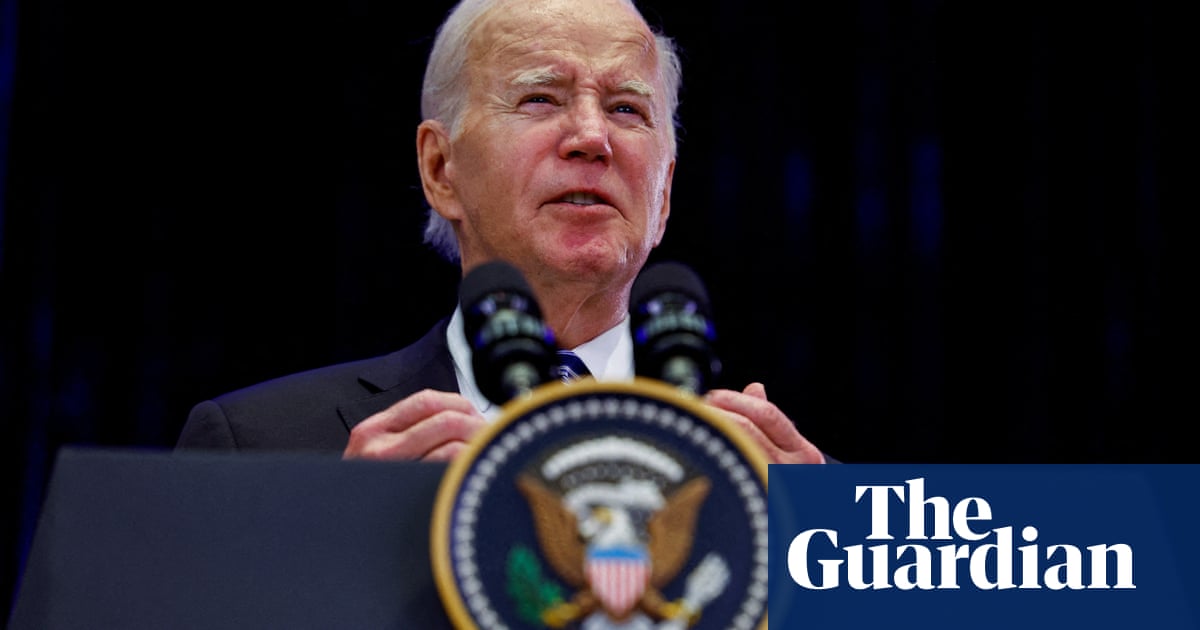
The US, the world’s second biggest emitter of greenhouse gases, is now committed to halving emissions this decade.
Joe Biden’s announcement, at a White House virtual climate summit, has thrown the spotlight clearly on the world’s biggest emitter: China.
China is responsible for roughly a quarter of global greenhouse gas emissions, and is likely to increase its carbon output this year. Without strong action from China, the world will be unable to hold back climate breakdown.
The country has a long-term target of reaching net zero emissions by 2060 but has yet to produce a national plan for its emissions this decade, as required under the 2015 Paris climate agreement.
At the White House climate summit, China was not expected to announce any major new initiative – the country would prefer not to be seen as acting in response to the US, with whom relations have recently been strained.
But Xi Jinping, the president of China, made a cordial and well-received speech in which he promised further action on clean energy and said China would cause its consumption of coal to peak around the middle of this decade.
He said: “China will strictly control coal-fired power generation projects, and strictly limit the increase in coal consumption over the 14th five-year plan period [2021-25], and phase it down in the 15th five-year plan period [2026-30].”
Xi’s commitment was positive but did not mark a breakthrough, climate experts said, as it would still allow for the construction of hundreds of coal-fired power stations planned for the next five years.
Byford Tsang, a senior policy adviser at the environmental thinktank E3G, said: “The new announcement is certainly a step forward. It is the first time China has set a timeframe on reducing its coal use, and sends a clear signal that coal is on its way out in its energy system in the long run. But greater domestic action is needed. To bring its policies in line with the 1.5C goal, China needs to stop investment in new coal domestically as soon as possible.”
Bernice Lee, the research director for futures at Chatham House, said it would take time for the commitment to take effect on the ground: “The skipper is sending the right signal to all the provinces and industries on coal. It should trigger more policies that will help accelerate this phase down.”
Just how far China needs to go on coal was underlined this week in a paper in the journal Science. Researchers from the Chinese Academy of Sciences, and Germany’s Potsdam Institute for Climate Impact Research, found that China would need to reduce its carbon emissions by more than 90% and its energy consumption by nearly 40% by 2050, to do its share in reaching the Paris climate target of holding global heating within 1.5C of pre-industrial levels.
Separate research found that China would have to close half of its 1,100 coal-fired power plants this decade to stay within the 1.5C limit, but could reap $1.6tn in economic benefits from doing so.
According to projections from the International Energy Agency (IEA) this week, global greenhouse gas emissions are expected to rise this year by about 5%, the second biggest increase in history, after the rebound that followed the 2008-09 financial crisis.
Fatih Birol, the executive director of the IEA, told the Guardian: “This is because of the rebound in fossil fuel use [following plunging emissions caused by the Covid-19 shock] and especially coal. The main driver [of the increase] is coal use in energy generation.”
There were some positive moves on coal at the White House summit, but they also fell short of hopes. South Korea pledged to stop funding coal projects overseas – a significant step, as the country is one of the biggest sources of finance for coal expansion around the world, alongside Japan and China.
Nguy Khanh, the executive director of the Green Innovation and Development Centre, based in Hanoi, said the impact would be felt across Asia: “The Korean announcement for ending overseas coal financing gives a strong signal for the recipient countries, like Vietnam, to reverse their current plans for the expansion of coal.”
But Japan, despite strengthening its own carbon-cutting target, has made no commitment to reduce coal financing overseas.
Helen Mountford, the vice-president for climate and economics at the World Resources Institute, said: “Japan is currently one of the largest coal financiers in the world, providing $5.2bn annually. Ending Japan’s finance for new coal projects would be an opportunity for Japan to stop fuelling the air-pollution health crisis when the world is still grappling with the Covid-19 pandemic.”
China also continues to fund coal development overseas, through its belt and road initiative of economic relationships around the world. Though Xi said in his White House speech that green issues were “key” to the belt and road, he offered no assurances on China’s policy of expanding coal development in other developing countries.
The US, where coal has been in decline since 2013, is experiencing a surge in coal use, as gas prices have risen during the pandemic. Biden will face stiff opposition in some quarters as he tries to limit coal use.
Ending reliance on coal across the world will be difficult, as coal is embedded in the infrastructure, economy and even the culture of many countries, according to Birol. Seeing an increase in the use of a dirty fuel that was supposed to be on its way out was “really depressing”, he said.
But there could be no way to avoid climate catastrophe without weaning the world, and China in particular, off coal, he said. “The decisions that will be made in Beijing will be critical not only for China but also for the whole world.”












